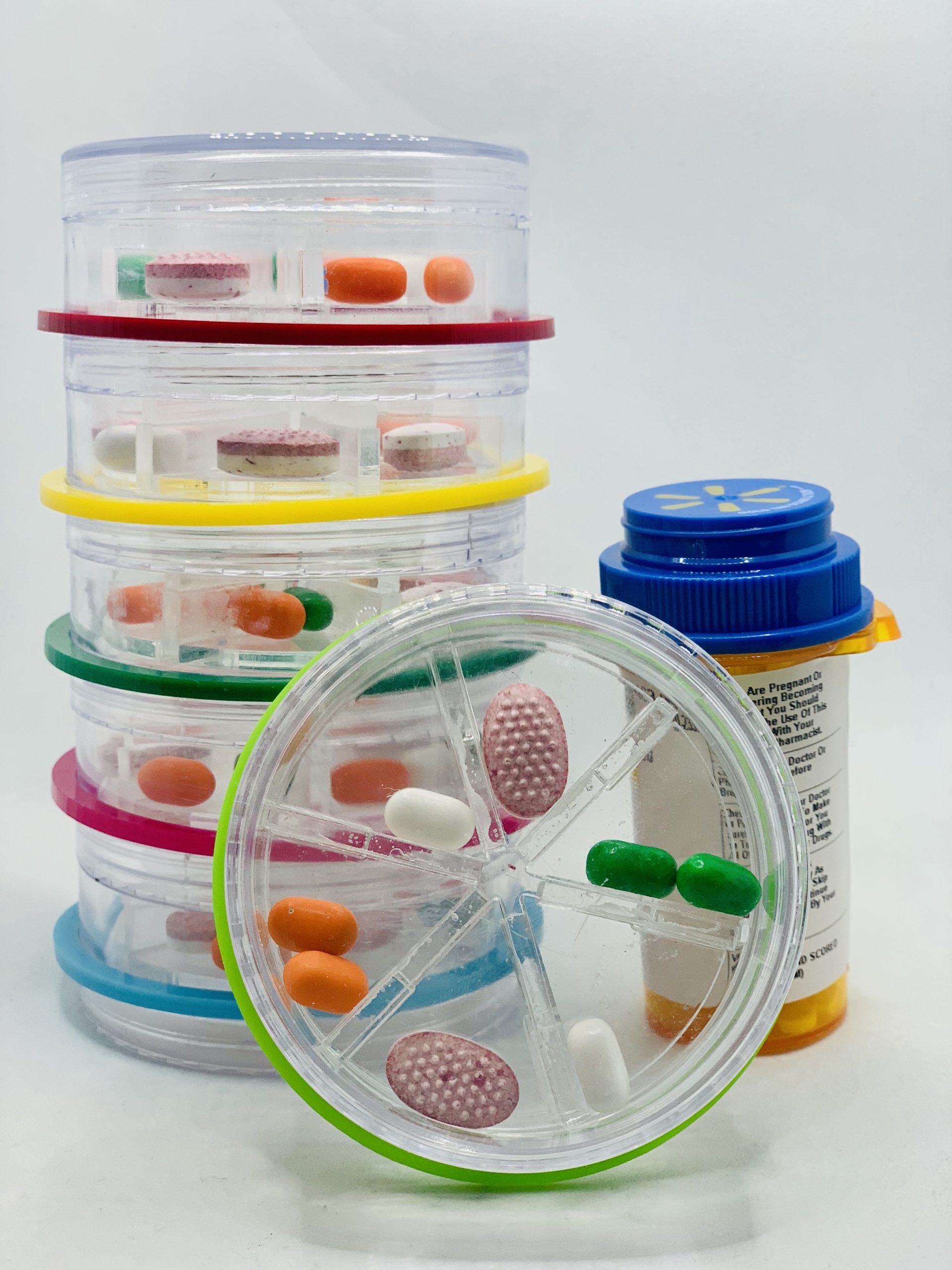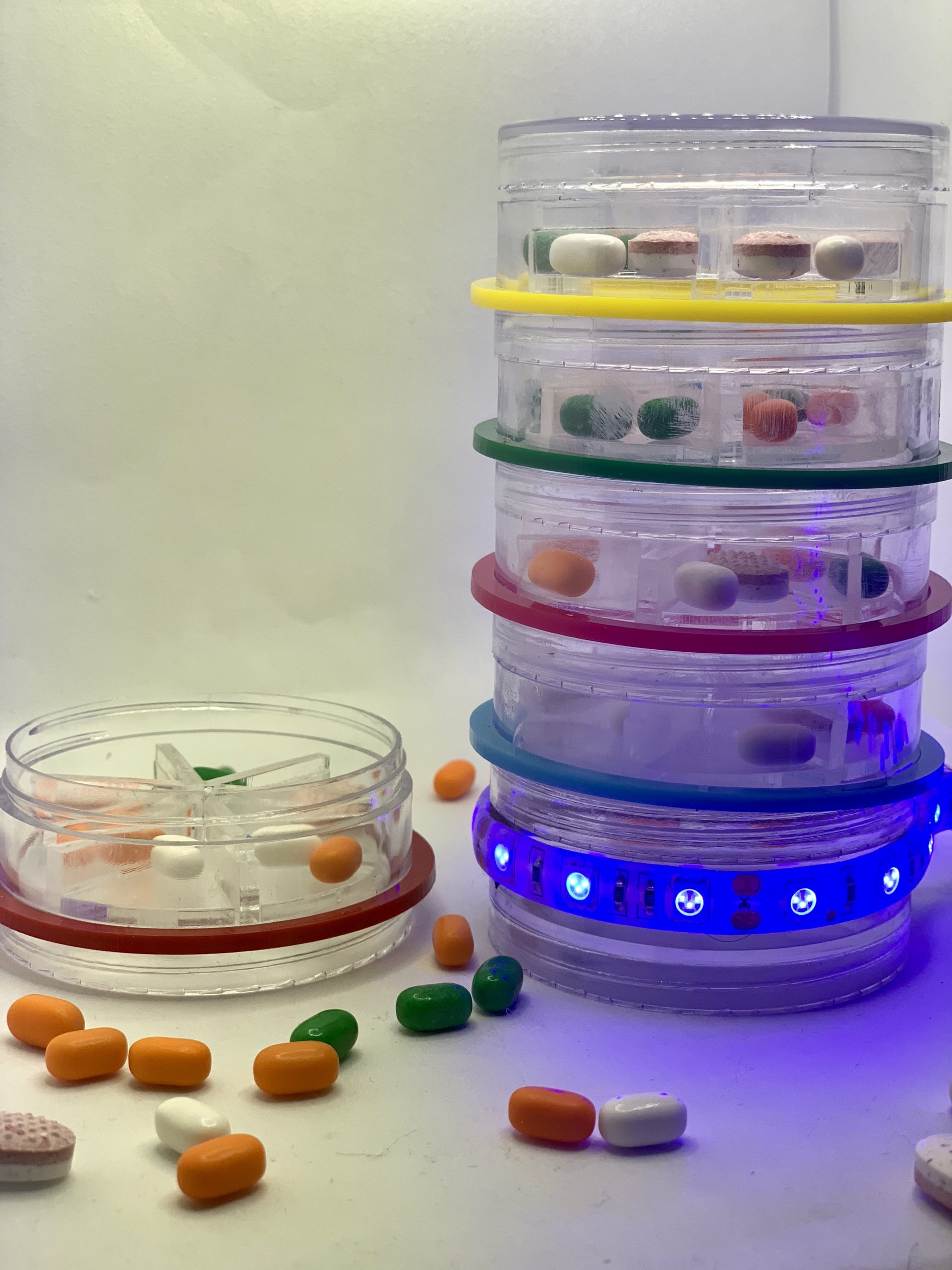
Students: Heya Kaakeh, Paul Hsiao, Elisa Kwon, and Tony Ngo
Course: DesInv 190-1: Human Centered Design
While considering the potential opportunities for improving medical adherence, the mediStack team focused on medication users, and improving communication of medical information to the patients directly when taking daily medication. Conducting 1-on-1 interviews with medication users to identify reasons for medical mal-adherence and difficulties with existing solutions, the team found the main reasons patients miss or incorrectly dose their medication was a result of the bulkiness of conventional pill bottles–making it difficult to take medications on the go, the potential for losing pill packages, and the difficulty in filling typical pill boxes.
The team then set out to improve upon traditional pill boxes, prioritizing their findings that information needs to be clear, readily available, and contribute to a rewarding and reliable user experience, discovering that the stackable circular pill organizer is a significant improvement on the conventional rectangular box. The main features of the stackable circular pill organizer are the use of stackable circular containers. Individual containers are then subdivided into a number of segments, each referring to a specific time of day during which the contained pill should be taken. The team’s user feedback indicated that the product and corresponding app would increase ease in sorting medications and confidence in doing so accurately, with physical features like the transparency of containers and divided sections to help remind users of the medications that need to be taken and clearly show when.
After many prototype iterations using magnets and electronics, the mediStack team settled on a non-electronic container as their standard module, while providing the option to purchase a more advanced ‘smart’ segment that can be threaded onto any of the other modules purchased. The compartment contains a visual alarm system that will flash when a medication should be taken. To start, the user creates a secure account with their email address and password. Once the user creates an account, they can scan QR codes printed onto prescription bottles by their pharmacy to view their medical and prescription information. After the scan or manual input is complete, the app prompts the user with pertinent information about the medication. The user can press on buttons for “side effects” or “warnings” to read additional information. If the medication and information displayed is correct, the user presses “confirm medication.” Since the QR code was scanned, the prescription automatically appears. There is even a “contact pharmacy” feature, should the dosage or prescription information change.
Once the user presses, “confirm prescription,” the app will ask if the user would like to set a reminder (options for silent, vibration, and audible push notifications) on their phone. The user can confirm or deny, and will then be prompted to either “add additional medication” or “configure mediStack.” The interface shows each segment in its respective color, and guides how the medication should be organized within its physical compartments. If the user would like to change the color or organization of a segment, they can tap on the container and edit the setup in the app. Once the user is satisfied with the suggested organization, they can press the “configure alarm” button. If a smart segment is connected the alarm on the smart segment will activate the LEDs when medication is to be taken, providing a visual cue for the user on the device that syncs with the reminders set up earlier in the process. If no smart segment is connected, the app will send a notification to the user’s phone itself, reminding and informing them to take their medication using the visually representation of the container in the app interface.
Read more about the prototyping and research conducted on the team’s Behance page.

